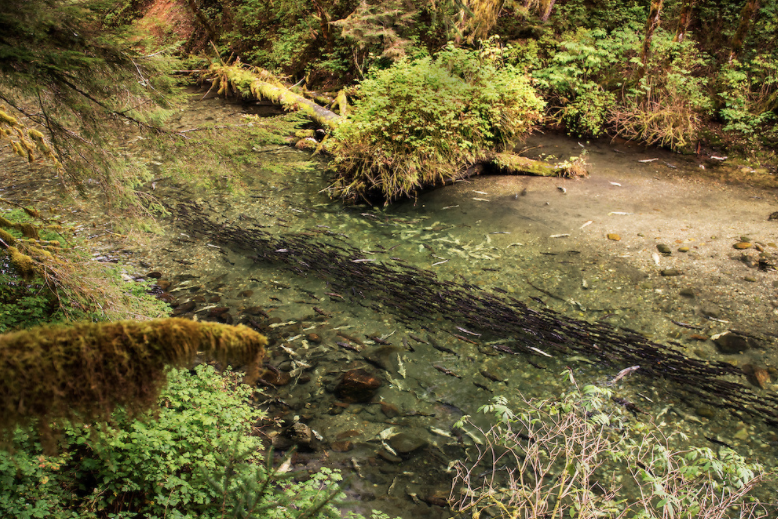Salmon forests of the Pacific Northwest
Building forests
Wild salmon fertilize the temperate rainforest with the open ocean nutrients stored in their bodies. The larger rainforest trees grow, the more carbon they pull from the atmosphere – helping reduce the greenhouse gases that contribute to global warming.
- During spawning season, bears, wolves, ravens, and many other species drag spawned-out salmon carcasses deep into the forest to feed on. Rich in nitrogen from the sea, the rotting salmon flesh fertilizes forest growth.
- Salmon promote forest health. Giant trees require nitrogen to grow massive canopies that shade the streams and absorb excessive rainfall. These help prevent flash-floods and mudslides from wiping out salmon-filled creeks.
- Salmon carcasses along riverbanks feed the insects that will nourish a new generation of fish the next spring.
Supporting river health
Salmon are naturally engineered to protect and make the most of their river habitat. While the annual salmon runs of each species are consecutive, they ebb and surge, constantly feeding the forest.
To ensure maximum salmon production from every creek, all five species require slightly different habitat:
- gravel of different sizes
- varying speeds of stream flow
- glacial meltwater
- lakes, deep pools or shallow riffles
- different elevations

